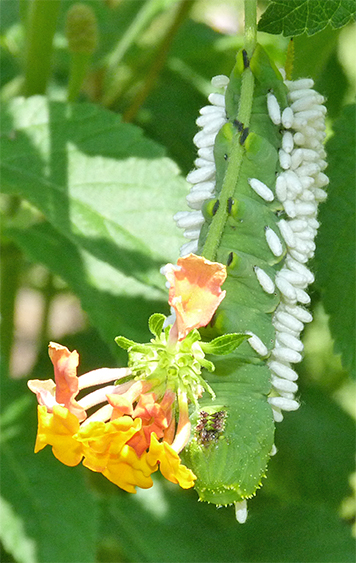
The large green object that the smaller white objects are attached to in the above photo is a caterpillar, a hornworm, a rustic sphinx moth larva. The white objects are the pupae of a tiny parasitic wasp, a brachonid wasp, which lays its eggs under the skin of its host (like the unfortunate caterpillar above).
The larvae that later hatch eat the caterpillar from within until ready to pupate. They then drill themselves out through the skin and form a silken coccoon on the outside of the caterpillar. This must be very uncomfortable for the caterpillar, they can often be seen thrashing back and forth while the pupae are attached.
The caterpillars never live to pupate themselves, having been eaten from within. The wasp larvae consume far to much of the caterpillar’s interior for metamorphosis to take place. Following the wasps’ emergence as adults, all that’s left of the caterpillar is a shriveled mass of skin and empty wasp cocoons.
Elsewhere in the world of lepidoptera, caterpillars belonging to the family of sulphur butterflies are busy consuming leguminous plants all around the Museum. Sleepy orange caterpillars are munching away in the garden in front of the Butterfly House and cloudless sulphur caterpillars are chowing down on partridge pea in Catch the Wind, and wherever else that particular plant happens to grow here on the Museum of Life and Science campus.
The sleepy orange…
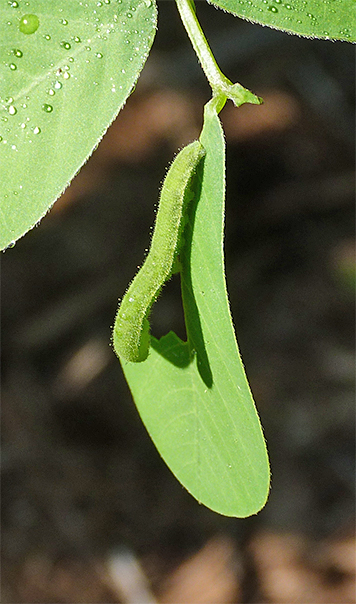
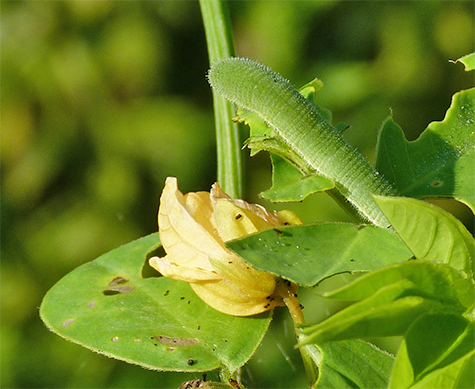
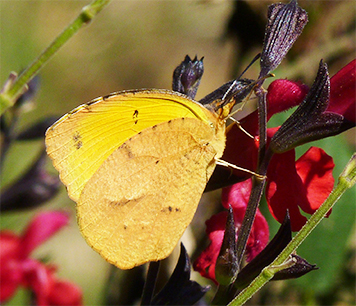
And the cloudless sulphur…
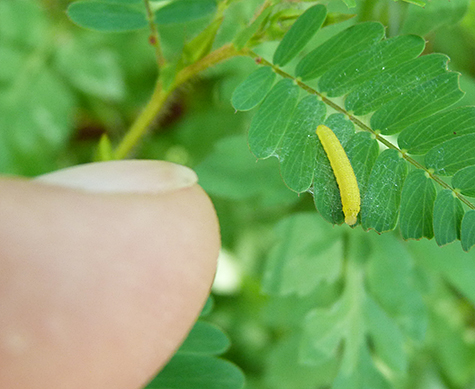
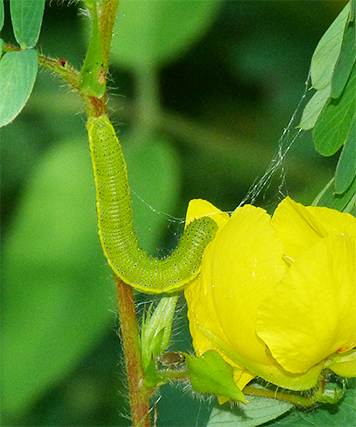
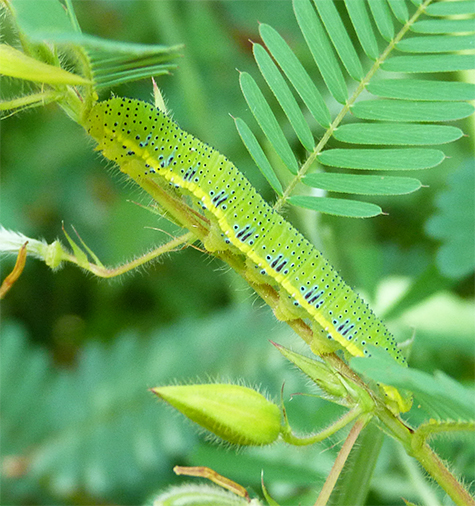
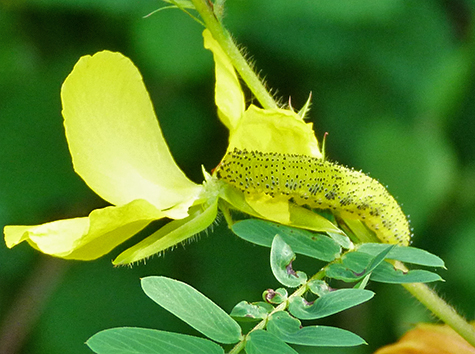
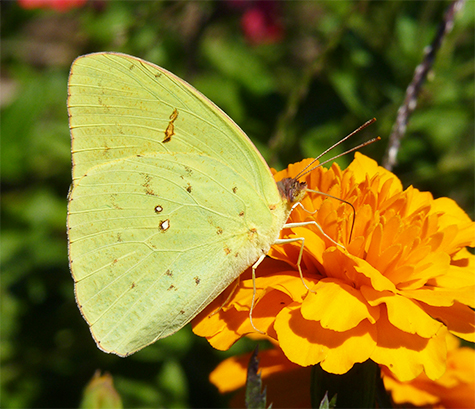
And finally, a butterfly we’re all familiar with, eastern tiger swallowtail. If you’ve been reading this blog recently you should know that tiger swallowtail females come in two color forms, light and dark, or yellow and black. Some females are intermediate between the two forms.
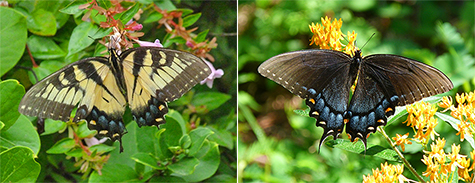
Here’s an individual which is intermediate.
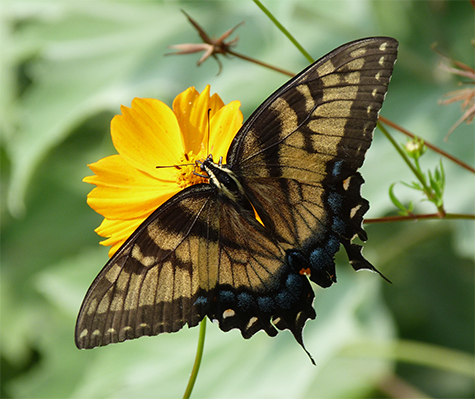
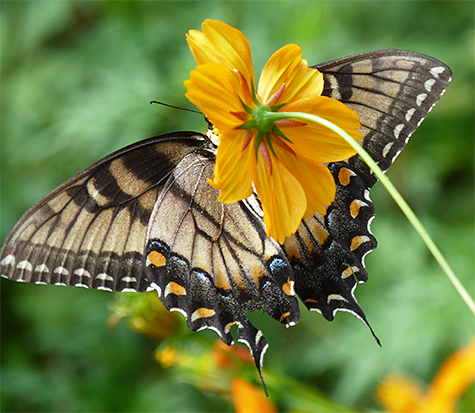
Keep a lookout for all of these lepidopterans, the next several weeks will bring an end to their seasonal wanderings.
That intermediate has now been hanging around for over a week! I saw her again this morning (9/1).